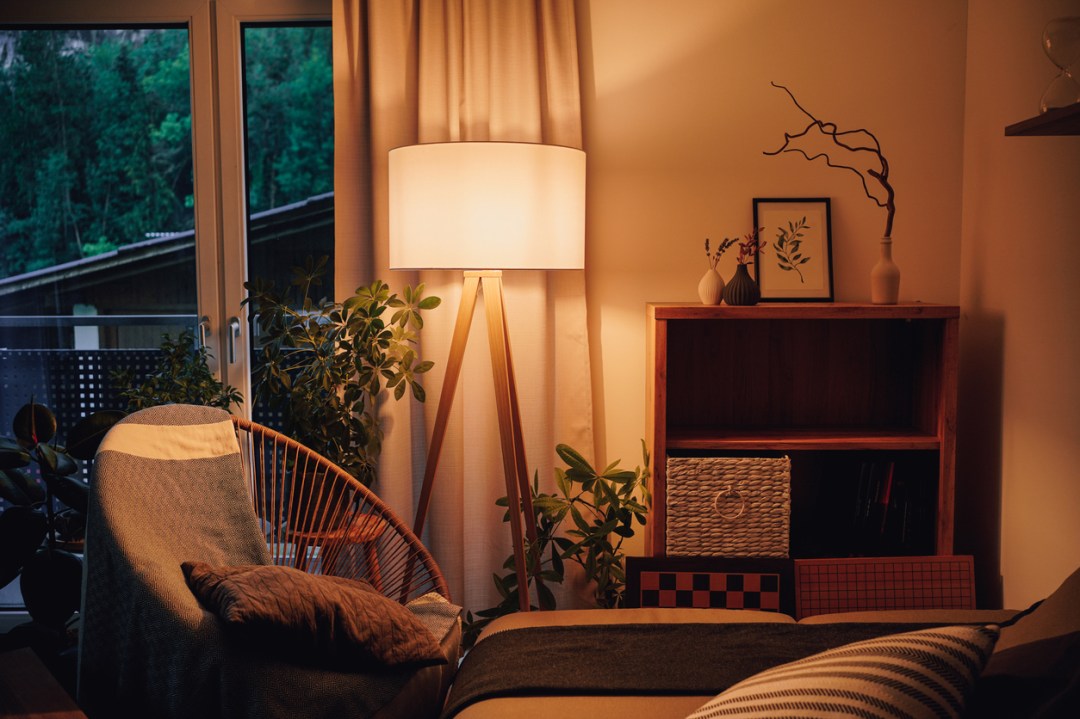Judging by how well it fares in the annual UN World Happiness Report, there’s not much rotten in the state of Denmark. It regularly tops the UN chart and while it might feel slightly glib to compare wealthy nations with warzones – why can’t those gloomy Afghans, languishing at 147th, cheer up? – the wider world can’t get enough of those Danish feelgood vibes. This, after all, is the land that gave us hygge, a hard-to-define word translating roughly as ‘cosiness’ – wellness candles, fresh pastries and nights in by the fire.
Many Danes have clearly decided that hygge is not quite compatible with open borders and multi-culturalism
Recently, however, the Danish criteria for national happiness has shifted somewhat – and it doesn’t involve baked apples or alpaca jumpers. In the last ten years, the country has carried out a harsh crackdown on asylum seekers and illegal migration, deeming it a threat to the national way of life. There are now far tougher rules on who can stay, and new ‘parallel society’ laws that forbid neighbourhoods becoming more than 50 per cent non-western.
The measures have been so successful in driving down asylum claims that Britain is seeking to copy them, with new Home Secretary Shabana Mahmood despatching a team of officials on a study mission to Denmark last month. Their findings are understood to have inspired much of the immigration reform package she is due to announce today, which will include making asylum claimants wait 20 years before they can apply to settle permanently.
Mahmood’s decision to go ‘full Danish’ has horrified hard-left Labour MPs like Nadia Whittome – who considers the Danish model ‘undeniably racist’. But others may be doing some handwringing too. The Danes’ new anti-immigration leadership is prompting some to ask a few questions about hygge as well. Was all that talk about conviviality and shared pleasures as nice as it seemed? Or did it perhaps exclude non-Danes – especially non-whites – a bit?
Such awkward questions were not being asked much when hygge first hit Britain in the run-up to the Brexit vote in 2016. It all started with an article about hygge on the BBC news website in late 2015, pegged to the news that an adult education college in London was teaching hygge on its Danish language course. This routine winter lifestyle feature went viral, becoming a template for national survival. In an anxious, divided Britain, what better way to forget than to spend a night knitting patterned socks, or sipping mulled wine?
Helped by the fact that few in Britain really knew what hygge was supposed to be, it became an all-purpose, hand-woven emotional comfort blanket – perfect for lockdown, and a dream for weekend lifestyle supplements. Hygge was used to sell everything from craft beer to cardamom-laced coffee, and generated a literary sub-genre of twee hygge-ographies: The Little Book of Hygge: Keep Calm and Hygge; Hygge: A Celebration of Simple Pleasures, and so on. The Radio Four favourite Sandi Toksvig, herself born in Copenhagen, even did a two series ‘celebrity-hygge’, sipping berry tea with arch-Remainer Gina Miller, and talking physics, piano and mulled wine with Professor Brian Cox. Amid the schmaltzfest, however, more liberal British hyggesters also drew a more serious lesson: once again, those nice Scandinavians, with their high taxes, generous welfare state and social democracy, were showing us how to live.
Whether those same hyggesters are quite so keen on learning from Denmark now is another matter. Many Danes have clearly decided that hygge is not quite compatible with open borders and multi-culturalism. In 2015, just as the BBC was extolling hygge’s virtues on its website, the anti-immigration Danish People’s party – Denmark’s answer to Reform – became the country’s second largest political party. Voters were alarmed at the influx of a million-plus migrants into Europe that year from Syria and elsewhere, more than 20,000 of whom settled in Denmark (a lot for a country of six million). There were concerns that Denmark might end up with the same ethnic gang crime problems as Sweden, and worries, in the wake of Denmark’s Muhammad cartoons row a decade before, about Islamist militancy. It’s possible that while they were enjoying hygge in front of the hearth, a lot of Danes weren’t just talking about whether there should be another series of Borgen, but whether the People’s party might have a point.
Indeed, the female founder of the People’s party, 78-year-old Pia Kjærsgaard, is big on hygge herself, her office full of soft lights and family photos. Her party presents her as a kind of grandmotherly version of The Killing’s Sarah Lund, protecting little Denmark against outsiders who might do it harm. Supporters argue that the very secret of Denmark’s social contract – high taxes combined with generous social welfare – was at risk if people didn’t pay their way.
Non-Europeans in Denmark have long noted that the cosiness of hygge is slightly excluding. In 2017, the Nigerian writer Faith Oloruntoba addressed the subject in an article called ‘Us and Them: the cold shoulder of Danish hygge.’ Hygge, she wrote, ‘reflects the fiery xenophobic sentiments currently spreading across Scandinavia and beyond. What enforces cultural homogeneity is the rules of hygge themselves; for instance, the rule of not having too many strangers in the room.’
Even some of hygge’s British champions have also acknowledged that Denmark isn’t perfect. Helen Russell, the Guardian’s former Scandinavia correspondent, wrote the book The Year of Living Danishly: Uncovering the Secrets of the World’s Happiest Country, an international bestseller in 2016. Back then, she described hygge as ‘the absence of anything annoying or emotionally overwhelming; taking pleasure from the presence of gentle, soothing things’. That alone could be read as a prescription for a slightly chocolate box way of life, insulated from the woes of the wider world. In a postscript to the updated 2020 edition, she revised her thoughts somewhat – noting, uncomfortably, that elements of the government crackdown had ‘the support of many left-learning, well-informed Danes.’
‘In the last couple of years I’ve woken up to this mythologising of Denmark and how my access to the country has been completely different to someone arriving from say Syria or Nigeria,’ she wrote.
Another student of Denmark was Guardian journalist Patrick Kingsley, whose 2012 book How to Be Danish explored Britain’s fascination with the country in the wake of Borgen and The Killing. In a Guardian article, he noted that Denmark was at ‘a tale of two opposing mindsets – one indignant and xenophobic, the other tolerant and communal’. He traced this back to the 1860s, when Denmark lost two southern provinces and nearly half of its population to Prussia. That, he said, had forged a complex siege mentality – fraternal and egalitarian, yet also somewhat wary of outsiders. In its championing of the joys of a comfy night in, hygge is perhaps channelling that feeling of relief at not having to make the effort to socialise or engage too much with strangers.
Meanwhile, the hygge lifestyle-industrial complex rolls on regardless – and with Christmas around the corner, will once again be flogging a perfect version of Denmark. The idea is that anyone pining to move to Denmark themselves can recreate that warm, fuzzy vibe in their own homes – something that might, admittedly, be harder for those living in Syria or Somalia. The Danish model for happiness certainly seems to be effective. But as Shabana Mahmood seems to have realised, it isn’t quite as welcoming as we might think it is.







Comments